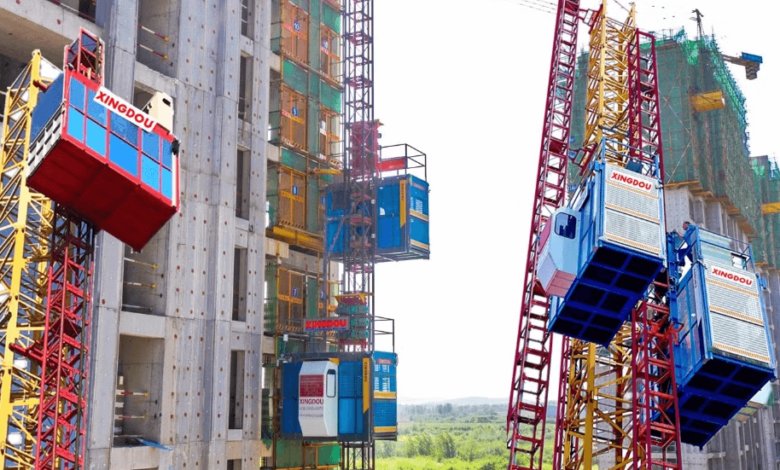Construction Hoist Elevator: Powering Vertical Efficiency on Building Sites

In the realm of modern construction, speed, safety, and vertical access are not luxuries—they’re necessities. One machine that plays a crucial role in meeting these demands is the construction hoist elevator. Serving as the vertical highway of building sites, this piece of machinery has revolutionized how workers and materials are transported in high-rise and industrial construction projects.
This comprehensive guide explores the design, function, importance, safety protocols, and future innovations associated with construction hoist elevators, showcasing why they are essential to any serious construction project.
What is a Construction Hoist Elevator?
A construction hoist elevator is a mechanical lifting system designed specifically for transporting personnel and building materials vertically on construction sites. Unlike traditional elevators used in completed buildings, construction hoist elevators are temporary installations attached to the outside of a structure during the construction phase.
They are typically composed of a steel mast or tower, a cage or cabin, drive mechanisms (usually electric motors), and a set of safety and control systems. These construction hoist elevator machines are engineered to operate under rugged conditions and to accommodate significant weight loads.
See also: The Impact of AI Face Swap Technology on Social Media Content
Why Are Construction Hoist Elevators Necessary?
As urban development increasingly shifts toward vertical expansion, the ability to move workers and materials efficiently and safely becomes critical. Cranes and internal lifts serve specific purposes but lack the flexibility, frequency, and personnel transport capabilities that a construction hoist elevator provides.
Key reasons these systems are indispensable include:
· Reduced manual labor strain
· Faster material delivery to upper levels
· Safe and regulated vertical movement
· Improved construction site logistics
· Enhanced overall project efficiency
Key Components of a Construction Hoist Elevator
The complexity and capability of construction hoist elevators lie in their well-integrated components. Let’s break down the main parts:
1. Cabin or Cage
The compartment that carries passengers or loads. It may be enclosed (for personnel safety) or open (for large materials).
2. Mast or Tower
A vertical steel frame that supports the elevator’s climb.
3. Base Station
The ground control area where the elevator starts and where controls, gates, and power sources are installed.
4. Safety Devices
Emergency brakes, overspeed governors, load limiters, and anti-fall devices ensure operational safety.
5. Landing Gates
Installed at various floors, these gates open and close automatically to allow safe entry and exit from the elevator.
How a Construction Hoist Elevator Works
The core operating principle behind most construction hoist elevators is the rack-and-pinion drive system. Here’s a simple breakdown of the process:
1. The drive motor rotates a gear (pinion).
2. The pinion moves along a fixed vertical steel track (rack).
3. The cage, attached to the gear, climbs or descends depending on the rotation direction.
4. The operator inside the cabin uses a control panel to select the target level.
5. Safety systems continuously monitor the elevator’s speed and load.
This system allows precise control, smooth acceleration, and quick braking—ideal for construction environments.
Types of Construction Hoist Elevators
1. Material Hoist Elevators
These are used exclusively for lifting building materials.
2. Passenger and Material Hoist Elevators
Enclosed and equipped with enhanced safety features, these elevators can carry both workers and materials safely to elevated floors.
3. Single-Cage vs. Twin-Cage
A single-cage elevator moves one load at a time, while twin-cage systems operate two independently controlled cages on the same mast for higher efficiency.
4. Custom High-Capacity Hoists
For industrial and megaprojects, custom elevators with high payload capacity (over 3,000 kg) and extra-wide cabins are available.
Applications of Construction Hoist Elevators
These versatile machines are used in:
· Skyscraper and high-rise building projects
· Bridge and dam construction
· Refineries and industrial plants
· Shipyard maintenance
· Facade work, renovation, and retrofitting
· Power plant construction
Their adaptability and modular construction make them suitable for both short-term and long-term installations.
Safety Standards and Compliance
Regulatory bodies and standards include:
· EN 12159 – Safety requirements for construction hoists (Europe)
· ANSI A10.4 – Personnel hoists for buildings under construction (USA)
· OSHA Standards – Safety requirements for temporary hoists (USA)
Key safety features include:
· Emergency stop buttons
· Manual lowering systems
· Interlocked landing gates
· Fall arrest brakes
· Overload indicators
· Routine inspection protocols
Advantages of Using Construction Hoist Elevators
1. Efficiency in Vertical Logistics
Moving materials and workers up a building takes minutes rather than hours.
2. Reduction in Physical Strain
Minimizes worker fatigue and injuries associated with climbing stairs or manually lifting materials.
3. Improved Time Management
More materials and teams can reach their assigned levels faster, accelerating the project schedule.
4. Flexibility and Scalability
Masts can be added as the building rises, allowing the system to scale with the construction.
Conclusion
The construction hoist elevator is more than just a lifting device—it’s a cornerstone of vertical construction logistics. Its ability to streamline workflows, improve safety, and enhance operational efficiency makes it a critical asset in modern construction environments.
From skyscrapers and bridges to industrial plants and temporary projects, these elevators prove their worth every day. As technology progresses and the need for higher efficiency increases, construction hoist elevators will undoubtedly remain at the heart of upward progress in the building industry.



